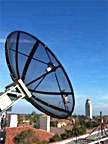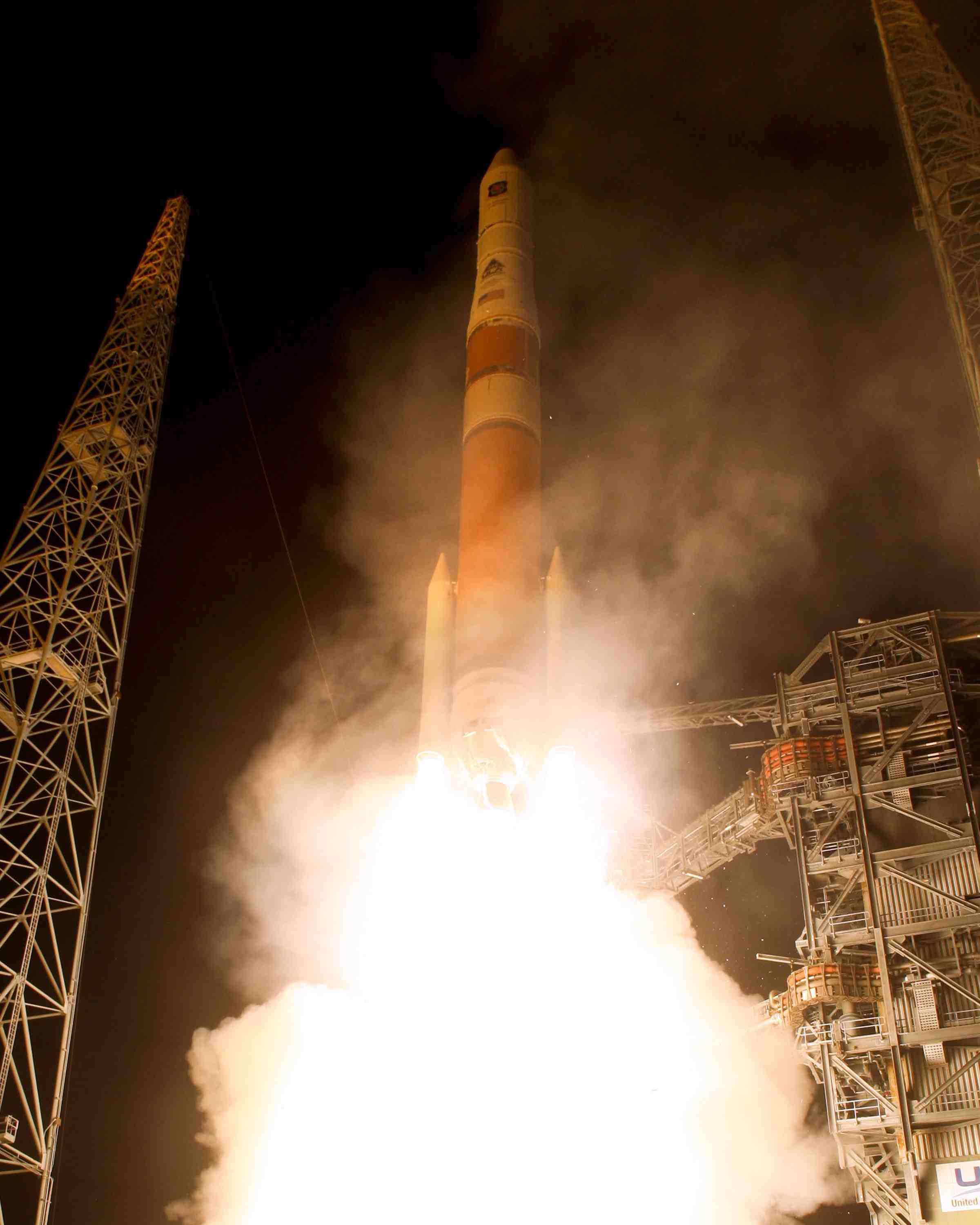 Stanford GNSS Monitor Station Antenna
Stanford GNSS Monitor Station AntennaInitial analyses by researchers in the United States and Germany of the transmissions from the first GPS Block IIF satellite indicate generally strong and healthy signals, although the some aspects of the new L5 signal are drawing close attention.
The researchers’ efforts will be reported in two articles in the July/August issue of Inside GNSS magazine.
Initial analyses by researchers in the United States and Germany of the transmissions from the first GPS Block IIF satellite indicate generally strong and healthy signals, although the some aspects of the new L5 signal are drawing close attention.
The researchers’ efforts will be reported in two articles in the July/August issue of Inside GNSS magazine.
Launched May 27, the satellite is identified by its space vehicle number 62 or SVN62, and pseudorandom noise code 26 or PRN25. The spacecraft carries the first operational L5 payload, sometimes characterized as a safety-of-life signal because it lies in a protected aeronautical radionavigation system (ARNS) radio frequency band at 1176.45 MHz.
Because the L1 signals transmitted at 1575.42 MHZ also lie in an ARNS band, prospective GPS users with requirements for high precision and integrity (such as those involved with civil aviation) hope to be able to apply dual-frequency techniques to L1/L5 signals transmitted from the same satellites. This will allow them to remove atmospheric effects more reliably and achieve more robust carrier-phase ambiguity resolution than in now possible with existing signal sets (i.e., L1/L2).
The L1 C/A code on SVN 62 appears to meet or exceed expectations with respect to signal deformations and does not exhibit any noticeable elevation angle dependence such as appeared on SVN49, a Block IIR-M satellite launched last year that carried a demonstration L5 signal. The relative range errors also appear to be within the bounds established by the other GPS satellites, indicating that the L1 C/A code on SVN 62 will be suitable for use by aviation, according to researchers at Stanford University.
Some significant digital and analog distortions were detected in the SVN62 L5 signal, according to the Stanford researchers and others at the German Aerospace Center (DLR), who coauthored the articles. However, they acknowledged that their signal-monitoring and analysis were still in the early stages with limited-duration broadcasts to analyze.
With only one operational L5 signal on the air, the researchers are unable to compare its performance with similar signals. Moreover, they noted that U.S. Air Force operators were still testing; so, the results of their signal monitoring may not reflect that of the final operational configuration of the satellite.
The operational GPS L5 signal offers a two-component structure, inphase (I5) and quadrature-phase (Q5), with the same signal power level and carrying different but nearly orthogonal and synchronized PRN codes.
The Q5 channel will be data-less, transmitting only a pilot signal modulated with the specific satellite PRN, which is useful for a long coherent integration time. On the I5 channel the navigation message is modulated with 100-symbol per seconds. Further, the L5 signal uses a Neuman-Hoffman synchronization code. Use of two different PRN codes helps to prevent possible tracking biases.
The L5 signal has a chipping rate of 10.23MHz which is 10 times the rate of the C/A and L2C codes.
Despite the limited amount of time for tracking and analyzing the signals, the researchers concluded that their “first look at the both the L1 and L5 navigation signals from this satellite cause us to be optimistic about the future of the GPS constellation and dual-frequency operations for aviation users.”





